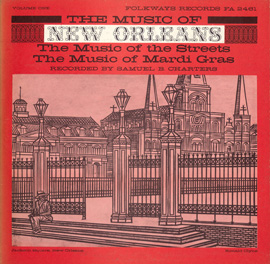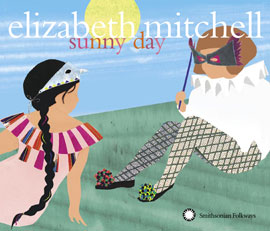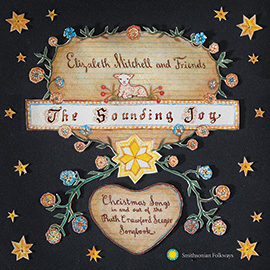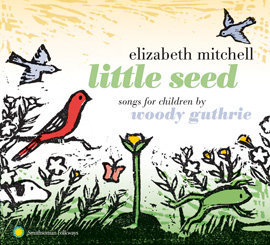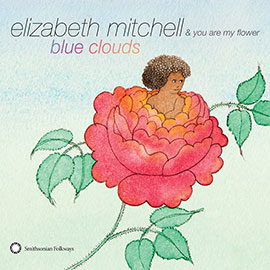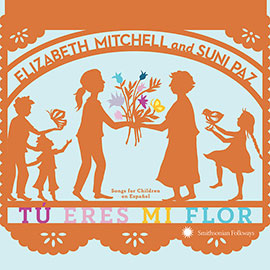Summary
This unit is intended to introduce students to the culture and music of Mardi Gras Indians, an important African American phenomenon that takes place in New Orleans. Students will examine the tradition and its culture-bearers, listen to and analyze Mardi Gras Indian music, and examine the multiple cultural influences that have contributed to the tradition. Students will gain experience in listening, movement, and performance, which will enrich their sense of the musical and cultural complexity of this phenomenon.
Suggested Grade Levels: C/U
Country: United States
Region: Southern United States
Culture Group: African-Americans & those with African-American/Native American Heritage
Genre: Folk
Instruments: Voice, Drums, Tambourines, Cowbells, Agogo Bells, and other items that may be played in percussive fashion (i.e., Bottles, Woodblocks)
Language: English
Co-Curricular Areas: History, Sociology, African-American Studies, Art, African Studies, Linguistics, Native American History
National Standards: N/A
Prerequisites: General knowledge of Atlantic slave trade / Familiarity with rudimentary music terminology
Objectives:
- Introduction to Mardi Gras Indians and some aspects of their tradition
- Listen to Mardi Gras Indian music, understand its form, influences, and more
- Learn from culture-bearers
Material:
- “Sew, Sew, Sew” from Blues Routes: Heroes & Tricksters: Blues, Jazz, Work Songs & Street Music; SFW 40118, Track 113.
- “Two-Wa-Bac-A-Way - The Indian Race” from Music of New Orleans, Vol. 1: Music of the Streets: Music of Mardi Gras; FW02461, Track 201.
- “Red, White, and Blue Got the Golden Crown” from Music of New Orleans, Vol. 1: Music of the Streets: Music of Mardi Gras; FW02461, Track 202.
- “Little Liza Jane” from You Are My Little Bird by Elizabeth Mitchell; SFW 45063, Track 101.
- The additional media materials listed at the end of this unit are vital components for the full development of the lectures and activities. They complement the materials of Smithsonian Folkways Recordings and are readily available for purchase.
Lesson Segments:
- Who are the Mardi Gras Indians?
- Mardi Gras Indian Music Making
- Musical Influences
Lesson 1. Who are the Mardi Gras Indians?
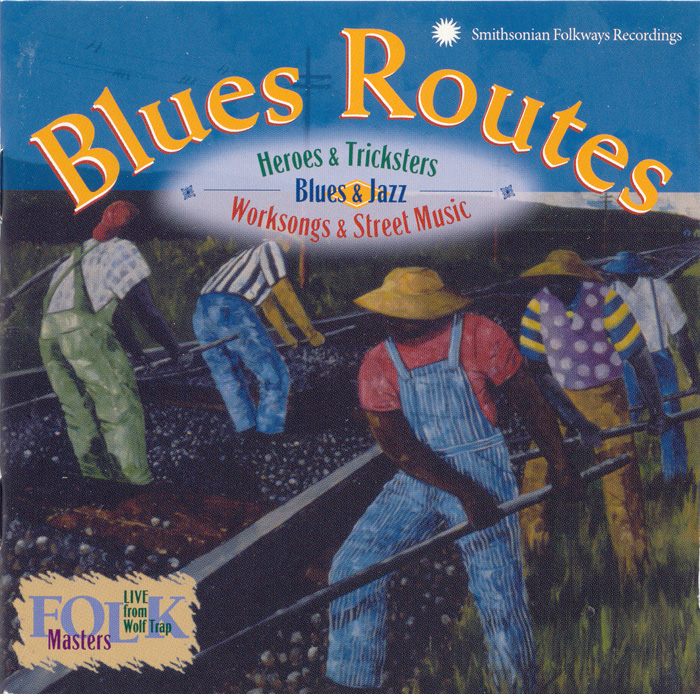
“Sew, Sew, Sew”
from Blues Routes: Heroes and Tricksters: Blues and Jazz Work Songs and Street Music (1999) | SFW40118

“To-wa-bac-a-way - The Indian Race”
from Music of New Orleans, Vol. 1: Music of the Streets: Music of Mardi Gras (1958) | FW02461
“To-wa-bac-a-way - The Indian Race”
- Ask students what they know about Mardi Gras celebrations, and draw them into a discussion of the sights, sounds, and atmosphere that transpires in one American city known for its Mardi Gras festivities: New Orleans.
- Introduce the Mardi Gras Indian Mardi Gras Day celebration as one important celebration of that holiday. Play the following selections as examples of the Mardi Gras Indian parade environment.
- Ask students to discuss the meaning of “Mardi Gras Indian” in terms of:
- Population group
- Geographic location
- Other factors, such as socioeconomic status, gender, and age
- Show photographs of Mardi Gras Indians’ costume patches and suits, accessible on the internet. Expect confusion as students come to terms with African Americans costumed as Native American Indians.
- Define term Mardi Gras Indians.
- An African-American tradition consisting of participants, who call themselves Indians, parading through the streets of greater New Orleans’ African-American neighborhoods dancing, singing, and playing musical instruments.
- These New Orleans Indians wear elaborate beaded and feathered costumes, called suits.
- Suits are designed to mimic Plains Indian dress (a point of distinction should be made between these Indians and Native Americans); these suits consist of feathers and sewn together panels onto which images have been beaded. The suits can weigh as much as one hundred pounds and may also consist of crowns or headdresses several feet in height.
- Most New Orleans Indian tradition-bearers belong to lower socioeconomic groups, yet with their meager earnings they purchase the thousands of dollars of materials needed to create an elaborate suit.
- In some instances, suits take a year to complete, and as soon as Mardi Gras festivities are concluded many New Orleans Indians begin creating a new suit.
- To don a suit and participate in a parade is called masking. Mardi Gras Indians mask on Mardi Gras Day, St. Joseph’s Night (March 18), three Sunday afternoons during the spring called Super Sundays. They also make appearances at the New Orleans Jazz and Heritage Festival and other cultural events. Their activities happen year round.
- Indians form social groups known as gangs or tribes that function as brotherhoods. The leader of a tribe or gang is called a chief.
- The Indians also gather together on Sunday afternoons for what they call “Indian Rehearsals.” At the rehearsals they sing Mardi Gras Indian songs, dance, and fellowship. This may be seen as a modern-day extension of festivities held by blacks on Sunday afternoon in Congo Square, New Orleans, many years ago.
- The Mardi Gras Indian tradition has been a mainstay in the city for more than a century.
- Have students view the video of “All on Mardi Gras Day.”
- As a review of film “All on Mardi Gras Day,” describe further Mardi Gras Indian cultural practices. Prompt students to provide information about each topic with iwhile filling in points not brought forth.
- Beading & Art Work
- In the beadwork by Indians, Native American iconography is a presence, as are other images which may be contemporary, such as those from Hurricane Katrina. I
- The beading style and technique is West African in origin, however, rather than Native American.
- Process of beading is often said to be spiritual in nature, with those beading indicating that they enter trance-like or meditative state while doing so. They sew beads onto cardboard that has been cut into a specific shape needed for the costume. After beading for hours, the hands may bleed or become numb.
- Show photos of beaded patches. If photos not available, images may be acquired using a Google search.
- Parading (Specifically Directed to New Orleans Indian tradition-bearers and those dwelling in the neighborhood)
- Occurs on Mardi Gras and St. Joseph Night (the night before St. Joseph’s Day, thus, March 18) and is most often not seen by outsiders. Indians dress in full costumes and parade in the following “formation.”
1st Flag Boy
2nd Flag Boy
3rd Flag Boy
Big Chief
(May or May Not Have Queen)
2nd Chief
(May or May Not Have Queen)
3rd Chief
(May or May Not Have Queen)
Council Chief
(May or May Not Have Queen)
Remaining Tribe Members & Musicians
- Not all tribe members will hold a leadership position.
- Multiple individuals may occupy any one position except first chief (Exampe: 1st Flag Boy, 2nd Flag Boy, etc.,)
- A description of Indian tribe leadership positions may be useful.
- Spyboys and/or Scouts - Lowest ranking position and those in this position run ahead of tribe to see if any other tribes are near or approaching. If they spot rival tribes or approaching tribes, they pass this information on to the flag boys. This position is often held by young men in their late teens or early twenties.
- Flag Boys - Flag boys are ranked one level above spyboys and scouts. They carry huge flags that are raised in the air to pass messages to the other tribe members(passed to them by the spyboys or chief) who may be some distance away. Positioning the flag in a certain manner may indicate a tribe approaching. May be young men in their twenties.
- Chiefs - Big (First) Chief is the highest ranking position in the tribe and is responsible for the tribe’s leadership in aspect. He may provide financial support for tribe activities or solve disputes between tribe members. The chief also decides who may be a member and will recruit membership for the tribe. There may be a second, third, etc., or fourth chief but these designations are not meant to imply a succession plan for the first chief position. In addition, a Council Chief position may be occupied but is merely meant to show respect to a former first chief.
- Wild Man - The wild man is responsible for the protection of the chief. In the early 20th century, meetings between tribes were violent and protection by a wild man was necessary. They would carry hatchets or other weapons. Currently the wild man controls access to the chief and determines who may have “council” with the chief.
- Roles for women: Until recently, most leadership positions were filled by men. Women who participated were designated as queens. The appearance of the queen was very important as her “good looks” enhanced the status of her respective chief. Queens are usually wives, daughters, girlfriends, or other female acquaintances of the chiefs. After Katrina, the population that practices this tradition moved to other locales and some did not or were not able to return to New Orleans, so more women began to fill positions once occupied by men. Currently, tribes may be led by a Big Queen who assumes the same responsibilities as a first chief.
- These parade routes are not published and the Mardi Gras Indians of New Orleans make few, if any, details of the parade public. They also do not seek permission or permits from government to have such gatherings.
- Parading for Non-Culture Members (Super Sundays & Cha Wa)
- Super Sundays are gathering of all tribes city-wide. Each area of the city of New Orleans (Uptown, Downtown, and West Bank) will hold its own gatherings, giving those from other areas the opportunity to visit tribes from different areas of the city. The Uptown Super Sunday is held on the Sunday closest to St. Joseph’s Day.
- Whereas the routes of the parades for the culture bearers are not published, the routes for Super Sundays are published and parade permits are sought from government. A police escort, whose expense is covered by the Mardi Gras Indians, leads the parade procession.
- Indian Rehearsal (Culture & Non-Culture Bearers Participate)
- Not rehearsals in the traditional sense where one’s performance is critiqued.
- These events are held in local clubs and Mardi Gras Indians are not dressed in full regalia but gather to sing, play, dance, make fellowship, and drink.
- Music-makers in some clubs are on a stage instead of being integrated into crowds as they are in parades.
- Although alcohol is served, children may be present at rehearsals. In addition, other incidents appearing inappropriate in the presence of children may occur, i.e., violence, profanity, etc; however, children are not expected to exhibit this behavior.
- Everyone is encouraged to participate in the singing and dancing, including those club patrons who are not Mardi Gras Indians.
- In the Mardi Gras Indian culture, songs are structured so that they are easy to learn.
Assessment:
- As homework, students should use youtube or any other media source (pamphlets, NOLA.com, etc.,) to view material created to attract visitors to New Orleans.
- In another class session, students should break into small discussion groups and answer the following questions. These questions are intended to inspire discourse about issues the New Orleans Mardi Gras Indians currently face regarding the use of their “culture.”
- Do you feel it is problematic (morally or legally, for example) if mainstream culture utilizes a culture’s “products,” including music, for its own goals, but does not acknowledge the culture elsewhere? For example, Mardi Gras Indians are not included in the New Orleans mainstream Mardi Gras parade but are used in advertisements to draw tourists to the city for such events.
- If someone uses your cultural products, i.e., music, artwork, should they always seek permission to publish, print images, or distribute musical recordings of it, especially if the “culture” occurs in public space? Currently, some of the New Orleans’ Mardi Gras Indians are seeking to copyright their suits, making it difficult for those who take photographs during parades to utilize those photographs for profit.
- Each group should select a spokesperson to provide a summary of responses. Encourage participants to speak up even if they do not agree with the perspective that may be most popular.
Lesson 2: Mardi Gras Indian Music
- Discuss the following general characteristics of Mardi Gras Indian Music.
- Mardi Gras Indians emphasize tradition in their music and musical practices but they want song leaders to put their own “stamp” on any song in their repertoire.
- There are a few songs common to all tribes, including, “Indian Red,” “Sew, Sew, Sew,” and “Two-Wa-Bac-A-Way.” There are many spelling variations for this one phrase, i.e, “Two Way Pock A Way.”
- A vast majority of the traditional songs are a litany of call-and-response exchanges between a song leader and chorus and can last a few minutes or an hour or more.
- New Orleans’ Mardi Gras Indian music may be placed into one of these style categories:
- Traditional music categorized as that heard during street parades or other street performances. Songs primarily consists of a litany of call-and-response exchanges between a leader and chorus. Instruments are primarily percussion instruments.
- “Mardi Gras Indian Funk” is Mardi Gras Indian music blended with funk-style electronic instruments, rhythms, and texts, including verse-chorus form. This music peaked in the 1970s.
- Contemporary Mardi Gras Indian music includes traditional music recast and incorporated into jazz and hip-hop idioms.
- Vocables are common but may be used for onomatopoeic effect and not have specific meanings. However, some may have linguistic links to the French or Spanish language.
- Songs are structured with repeated rhythmic motives, melodic motives, and other factors that facilitate learning with ease as well as performance in the parade and club environment.
- Source materials for text include a multitude of sources, i.e., Negro folk tunes, current events, etc.
Explain that, “Sew, Sew, Sew, ” which is the first recording sampled, is a traditional song whose text subject is the angst involved in getting the sewing of a suit complete by Mardi Gras day. As the example is played, students should listen closely and note the melody, harmony, rhythm, texture, form, and text.
To make analysis easier, suggest students draw a chart (see below) with the attributes listed on one side and room to make comments on the other.
|
Attribute |
Song: Sew, Sew, Sew |
|
Sound(Instrumentation, Vocal Quality, Etc.,)
|
Instrumentation - Drums, tambourine; Vocals consists of singing, “hollers,” and vocal effects; Energetic
|
|
Melody(Range, Scale, Motives, Etc.,)
|
Repeated melodic motive in chorus response; Leader is improvising lines that fit melodic motive
|
|
Harmony
|
No chord changes
|
|
Rhythm (Motives, Influences, Etc.,)
|
Instruments repeat a rhythm pattern or vary it.
|
|
Texture (Homophony, Heterophony, Etc.,)
|
Heterophony
|
|
Form (ABA, Song form, Blues, Etc.,)
|
Introduction; Exchange of Call Lines and Response between Song Leader and Chorus
|
|
Text(Subject Matter, Verses, Etc.,)
|
Improvised lines from leader; Vocables
|
- Start discussion of the song by asking one student to volunteer their thoughts on the “melody” of the music, then another volunteer should address “rhythm,” and so on.
- Continue further discussion of selected attributes:
- Instrumentation
- Ask students what instrument(s) they hear on the recording and which are playing the motive that is the rhythmic foundation of the song (tambourine and drums).
- Describe different instruments Mardi Gras Indians may use. List includes but not limited to drums, tambourines, bottles tapped with sticks, cowbells, agogo bells - anything else that can be played in a percussive manner.
- All sorts of drums are used; however, the tambourine is the most important instrument. Note that the use of bongos and congas is controversial because some Indians feel that are not “Indian.”
- Tambourines in Mardi Gras Indian culture have a special status. The owner of the tambourine may decorate the head with imagery, paintings, etc., of items important to them; they may attach pictures, or write quotes on the tambourine head. Note that during the evacuation for Katrina, this was the only instrument many Indians were able to save due to its size.
- Show pictures of Mardi Gras Indian tambourines. If not readily available, images may be acquired through a Google search.
- Form (Consist of Introduction & Song Body)
- Introduction
Leader: I remember one morning I remember well
Response: Yay-O & Other “Hollers”
Leader: I say, Cootie-Fay La Don(inaudible), I remember one morning I remember well
Response: Yay-O & Other “Hollers’
Leader: They had two spy boys running and they had big queen raising hell
Response: Ooh Ay O (With Variants)
Leader: Somebody, Somebody write my momma, tell my dad
Response: Ooh Ay (With Variants)
Leader: Tell ‘em I Chief White Cloud, that Mardi Gras Morning, don’t you make me mad
Ask students to note prominent features of the introduction: - Call-and-response between a leader and chorus
- Instruments providing their own “response” to the leader’s call
- Presence of vocables
- Standard Mardi Gras Indian Phrases (“Cootie Fiyo” and “Cootie Fay”). There are no specific meanings and linguists have not been able to establish roots of these phrase or trace back to any specific language.
- Body of Song
- Replay the segment of the earlier example, asking students what is significant about this portion of the song.
- Call-and-response between leader and chorus
- Ask “What is the rhythmic foundation?” The rhythmic foundation is based on a motive. Ask students to clap motive with music. Then have students stand and walk the beat, clapping the motive. Next ask students to clap the rhythm and sing chorus refrain (“Somebody got to Sew, Sew, Sew.”) Note the challenge that this may cause due to the polyrhythmic nature of the music. This will give students a tactile experience of polyrhythm.

- Convey the importance of performance. Young Mardi Gras Indians typically learn by doing, via oral tradition, rather than through formal curriculum. Everything is performance-based.
- Student performances require a song leader, those who will sing the chorus refrain, and those who will play instruments.
- Demonstrate and have percussion and singers play or clap rhythmic pattern noted in the transcription below. Keep this rhythm going.
- Sing the chorus refrain (see below) and then have students sing back.
- Rehearse this group referring back to recording as necessary. Establishing this rhythmic foundation is crucial.
- Song leader role will be the most difficult to learn. The student in this role should listen to the recording and learn the first 5 “calls” the leader sings by singing along with recording.
I sewed, sewed, all night long
I sewed, sewed, all night long
I sewed that morning, til’ the break of dawn
I took ‘em up and I brought ‘em down
Say my big chief got a golden crown - Song leader, chorus, and musicians should rehearse together continuously until the ensemble “gels,” referring to the recording as necessary.
- To increase the number of “calls” available to the song leader, have the leader improvise five more lines that fit the melodic motive of the song. The student may not be capable of “on the spot” improvising, so allow some time to compose lyrics.
- Rehearse the newly compose lyrics with the group.

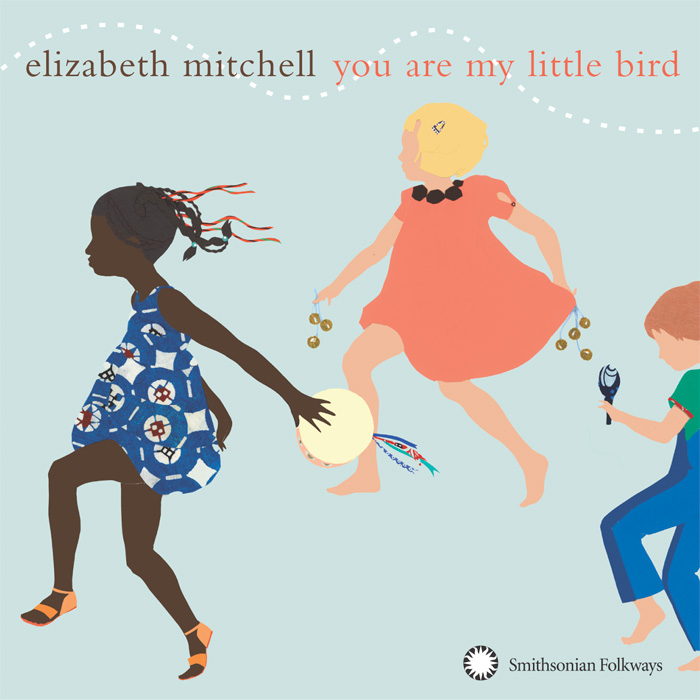
“Little Liza Jane”
from You Are My Little Bird (2006) | SFW45063
Body of Song (3.b.ii) continued...
- Ask students to listen to the following examples and note how they differ.
- Play children’s song “Little Liza Jane”
- Play Track 8, “Little Liza Jane” from Lightening and Thunder by the Golden Eagles Mardi Gras Indians.
- Ask students to explain the differences they heard. Note how Mardi Gras Indians have appropriated this traditional folk song:
- The traditional recording of “Little Liza Jane” is meant to accompany a children’s game. This indicates that Mardi Gras Indian song sources are multiple, including children’s singing games and pre-existing Mardi Gras Indian songs.
- Sound - Instrumentation in the Mardi Gras Indian version includes drums, cowbell(s), and tambourines. Vocals consists of “hollers” and singing.
- Melody - The song body of the Mardi Gras Indian version begins with a call by the leader “Hey Little Liza” and a response from the crowd (chorus) “Little Liza Jane.” This is then followed by another call by the leader “Hey Little Liza” and the crowd (chorus) responds “Little Liza Jane.” The chorus will sing the same response refrain (melodically and rhythmically) throughout the entire performance. The vocal lines of the song leader have improvised text that is overlaid onto a basic motive pattern.

- Rhythm - The introduction does not have a steady beat. But the rhythmic foundation of the song body appears to be a repeated motive.

- Form - The Mardi Gras Indian version begins with an introduction which is a litany of call-and-response between the song leader and the crowd which is then followed by the body of the song.
- Text - The song leaders’ text is improvised and is not related to the traditional text of the song. The only item retained intact is the chorus response (see transcription above) which is repeated throughout the whole song. In this version, the text has sexual overtones.
- Explain that this comparison demonstrates some additional features of Mardi Gras Indian performance and composition practices: 1) Sources of song material (text) are multiple, 2) Lyrics may be juxtaposed in any manner and lyrics taken from multiple sources may be blended to create something unique, 3) Subject matter(s) of the text are at the discretion of the song leader, and 4) Song form and duration are at the discretion of the leader. A song leader may add an introduction or omit it.
Mardi Gras Indian Funk
- Play example of “To-Wa-Bak A Way - The Indian Race” and ask students to note form, melody, rhythm, & instrumentation.
- Play example of “Two Way Pak E Way” from The Wild Magnolias CD1, Track 3 making note of form, melody, rhythm, & instrumentation.
- Pose question to students as to what forms of African-American music may have influenced the Mardi Gras Indian music (Funk & R&B).
- Most notable differences between the two versions are that:
- Wild Magnolia’s version was recorded in a studio and the other is a part of an interview recording by Samuel Charters (although the singing takes place on the street). Note: neither version is recorded in its true performance context.
- The influence of funk and R&B is demonstrated in the Wild Magnolia’s version
- Ask students how the Wild Magnolia’s version demonstrates the influence of Funk & R&B. Instrumentation include includes instruments used in Funk & R&B: electric instruments (guitar, bass, keyboards), drum set, clavinet, conga drums, other percussion, sound effects, and whistles.
- Note that the refrains on the Wild Magnolia’s versions vary between “Two Way Pak E Way” and “Hey, Pak E Way.” Both phrases may be used as titles but refer to the same song. In Mardi Gras Indian music, just as in popular music, hooks or refrains are the titles of songs.
- Wild Magnolia’s version is a litany of exchanges between a leader and chorus.
- Ask students whether they can figure out what this phrase might mean in the context of the Mardi Gras Indian parade environment? (It means, “Get the Hell Out of the Way!” Some linguists propose the origins of this phrase may be the French language.)
- Play example of the “Hey, Pocky A - Way” recorded by the Wild Tchoupitoulas Tribe on their CD Wild Tchoupitoulas and ask students to note the instrumentation and form of the selection.
- Instrumentation is that of funk music & includes electric guitar, electric bass, clavinet, tambourine, congas, drum set, shakers/other percussion, and piano.
- As students how the text of this version differs from the previous Wild Magnolia’s version? Replay if necessary and note that 1) Verses have been created; the song is just not litany call & response lines, 2) There is a 16-bar form, 3) Verses and choruses are alternated with interludes between them, 4) There is no song leader and everyone sings verses, with exception of improvised calls at the end of song, 5) The version is designed to fit a recorded format - song is just 3 minutes and 57 seconds
Assessment: Ask students to write a brief two page essay on how they think musical factors/characteristics exhibit the beliefs or facilitate the practices of the Mardi Gras Indian community. Some suggested threads of discussion follow:
- Facilitating building community.
All allow music making to become community activity. Mardi Gras Indians view activities (parading, singing, and dancing) as community- building and fellowship. During parades participants in singing include those in the neighborhoods where the Mardi Gras Indians parade. Characteristics such as, textual and melodic, and motivic repetition allow the music to be learned easily and remembered year to year. - Mobility
The playing of small percussion allows for mobility and give the Mardi Gras Indians the ability to share their music with whomever they desire in their respective neighborhoods. - Music Education
See Community Building - Promoting History and Lore
Song lyrics being vehicles of teaching younger generations about Mardi Gras Indian lore and history.
Additional Materials: CDs (MP3s), Video (DVD), and Readings
CD: Wild Tchoupitoulas
Artist: The Wild Tchoupitoulas Mardi Gras Mardi Gras Indians
Mango(Island Records) 1976
CD: Lightning and Thunder
Artist: The Golden Eagles Mardi Gras Indians
Rounder Records - 1988
CD: The Wild Magnolias/Thy Call Us Wild - 2 CD Set
Artist: The Wild Magnolias Mardi Gras Indians
Universal Music France - 2007 SSC 3068
CD: Indian Blues
Artist: Donald Harrison, Jr.
Candid Productions
1992 Re-release 2003
DVD: All on Mardi Gras Day
Royce Osborn
Spyboy Pictures, 2008
1. Up From the Cradle of Jazz: New Orleans Music Since World War II Jason Berry, Jonathan Foose, and Tad Jones
University of Louisiana at Lafayette Press, 2009
Chapter 17: In Search of the Mardi Gras Indians
Chapter 18: Willie Tee and the Wild Magnolias
Chapter 19: Big Chief Jolley and the Neville Brothers
2. The World That Made New Orleans
Ned Sublette
Lawrence Hill Books, 2009
Pages 293 - 311
Lesson 3: Contemporary Mardi Gras Indians
- Discuss Influences from Other Cultures/Locations on Mardi Gras Indian Music
- Note that influences from other cultures are evident in New Orleans’ Mardi Gras Indian music. Review one rhythmic pattern from “Sew, Sew, Sew” and ask students to clap the pattern as review.

- Note that is a tressillo pattern, a traditionally Cuban rhythm. Other Mardi Gras Indian songs may be based on other Cuban rhythmic patterns, including cinquillo. Clap the cinquillo rhythm.

- Play “Two-Wa-Bac-A-Way - The Indian Race”
- Ask students if they know which instrument is playing the cinquillo pattern. (tambourine)
- Clap the cinquillo pattern and have the students join in.
- Sing the chorus refrain and clap the cinquillo pattern and have students join in. Note this will be difficult to do given the similarities of the patterns.
- Discuss how/why Cuban influence may have crept into Mardi Gras Indian music by considering the geographic location of New Orleans and come historical exchanges with Caribbean peoples to the south and east..
- Show a map of the Caribbean region and “re-frame” perspective with New Orleans as the northernmost point of the Caribbean culturally.

- Provide a brief timeline of territory of New Orleans
- 1718 - 1764 French Controlled
- 1764 - 1803 Controlled by Spain
- 1803 - Brief French Control but Later Sold to the US (Louisiana Purchase)
- Although New Orleans was under Spanish control at one time and subsequently U.S. control, the city remained heavily “French” ,i.e., language and culture.
- When the Haitian Revolution occurred, those living in Saint Dominque (the island where the Dominican Republic and Haiti are located before it split into two countries) fled the country with their slaves and went to Cuba.
- They were expelled from Cuba in 1809 because many refused to acknowledge the Spanish leadership of Cuba and wanted to maintain their French culture.
- Pose question to students “So where would these French speaking and acculturated refuges go with their slaves?” (New Orleans)
- This new slave population. with their knowledge of Spanish rhythms from Cuba, mixed with the existing New Orleans slave population and influenced New Orleans musical forms.
- African timelines are also present in Mardi Gras Indian music.
- Define “timeline” as a unit of beats that are not equal in length that musicians in some African cultures and those in the African diaspora utilize in orienting their musical sense of timing.
- The timeline below is a common one found in Mardi Gras Indian music.
- Ask students to clap the timeline along with teacher.

- Play “Handa Wanda” - Track 1 of Wild Magnolia’s CD 1(The Wild Magnolias)
- Ask students whether they can identify the instrument playing this timeline pattern? (cymbal, tapped with stick)
- Contemporary Influences/Adaptations: Jazz & Other Genres
- Note that Mardi Gras Indian music is becoming increasingly difficult to define because some musicians are blending it with other genres and traditions.
Donald Harrison, Jr., son of noted Mardi Gras Indian chief, Donald Harrison, Sr., is a critically acclaimed jazz musician who blended the beats and street sounds of the Mardi Gras Indians with Jazz. He has experience performing and composing for a myriad of genres: Hip-hop, Classical, Soul, R&B, and Jazz. Harrison was given the title the King of Nouveau Swing because of this blending. He is a practicing Mardi Gras Indians who leads his tribe, the Congo Nation, and also performs as a jazz musician. Despite his schedule, he beads his own suits and participates in street parades. He redefines what is expected of a New Orleans jazz musician or Mardi Gras Indian. Ask students do they think this assertion is accurate? What does this say about Mardi Gras Indians? What does this say about jazz musicians? Does mixing Mardi Indian music harm the tradition or dilute it? - Discuss Harrison’s CD Indian Blues as a tribute to the Mardi Gras Indian culture.
- Play samples of each track for students to get a sense of Harrison’s music making. Consider some points to bring forth to students:
- The irony that Harrison’s repertoire includes one jazz standard that alludes to Native American culture, “Cherokee.”
- Harrison’s music adds melodic instruments, and this changes the range of melodies commonly heard in Mardi Gras Indian music, especially as these melodies become more sophisticated
- There is an increasing use of harmony in the vocal lines.
Assessment: Divide students into discussion groups and ask them to peruse the Harrison’s album, pick a track they would like to discuss and analyze. Each song should be analyzed in terms in musical elements but also in terms of the following:
- How does one assess Harrison’s homage to Mardi Gras Indian culture? Is this jazz with Mardi Gras Indian influence or Mardi Gras Indian music influenced by Jazz?
- How did Harrison change Mardi Gras Indians songs to fit the Jazz idiom?
- Did Harrison do anything to make the Jazz idiom fit the Mardi Gras Indian music style?
- What other influences are heard—Afro-Caribbean, timelines, etc.,?
- How does the inclusion of melodic instruments change performances, i.e., ranges of melody lines larger, less repeated melodic motives, instrumental effects where vocal effects do not occur, etc.?
Each group will lead the class discussion for the tune they have chosen.



